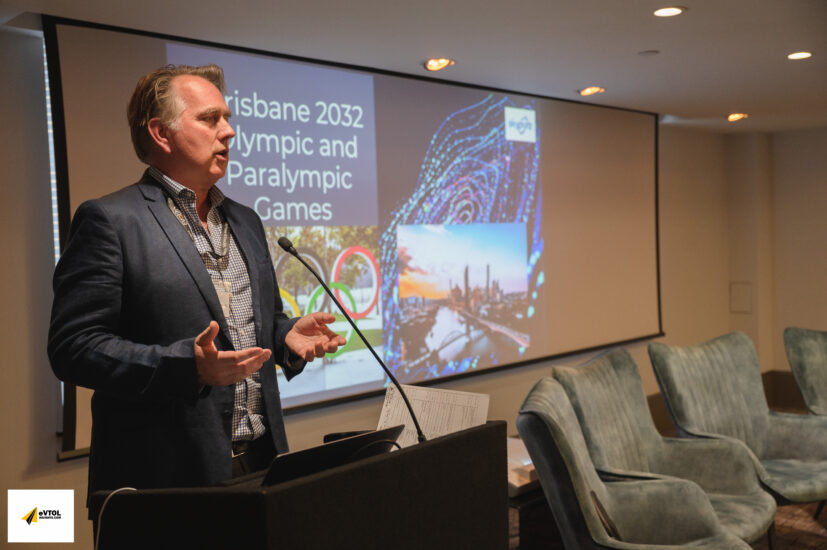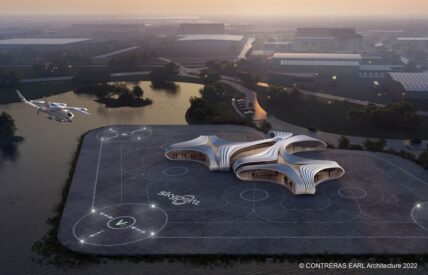Meet Clem Newton-Brown, CEO of Australia’s Skyportz
A Q&A with an Aussie AAM Leader

1. Tell us a bit about Skyportz origin story. How did the idea to pursue a network of vertiports in Australia come about? Who was involved? When did it happen?
Skyportz was conceived in 2018 when Uber Air were looking for third test city. I was acting as a city planning consultant for a helicopter operator in Melbourne and it was clear to me at this time that if AAM was to become a reality then a vertiport network was required
2. Tell us a bit about Skyportz goals and timelines. How many vertiports, where, when do you hope to start construction and when do you hope to be operational?
We have many hundreds of potential sites under option for vertiports in Australia.
However, our focus is now on developing a low cost and functional vertipad product that will be licensed for use globally and available to the whole industry, including vertiport competitors and OEMs.
Our product is patented and provides solutions to turbulence, fire, noise, safety, power generation and storage amongst other things.
It is suitable for both airports and new vertiport sites and will be available for purchase within 12 months we expect.
3. How is Skyportz connected into the Australian AAM community? Do you have partners? If so, who and what is the relationship about.
Much of our work has been in serving on industry and Government committees to work collaboratively.
This industry is multifaceted and enormous so there is plenty of room for everyone to find a niche.
We work closely with companies in engineering, research, aviation, architectural design, batteries and lots more.
We have also signed up for first rights to bring aircraft into Australia to operate under our wholly owned Wilbur Air brand that will have priority access to our vertiports.
4. Have you faced any challenges so far and if so, how have you overcome them?
The whole industry is waiting on certified aircraft and it has been a long 5 years but it seems we are close. Raising funds for an industry with no product yet is challenging but we run a lean operation and have loyal investors who will provide as much runway as we need.
The biggest challenge will be the business model for being a vertiport operator. We see potentially more viability in our vertipad patented product in the short term and our Wilbur Air operations in the long term.
5. Tell us a bit about how Skyportz interacts with the Civil Aviation Safety Authority. What requirements have they proscribed?
We have contributed to the recently released “Guide to Vertiport Design.”
The Guidelines are performance based rather than being overly prescriptive.
They mirror much of where other regulators such as FAA and EASA are headed.
Our vertiport patent will provide an affordable solution to show that the guidelines can be addressed to deal with all sorts of safety issues identified.
6. Does Skyportz have plans for vertiports outside of Australia? If so, where?
Yes, we are looking for equity partners to help develop and take our vertiport patent globally. We are currently in discussions with several parties and sharing our intellectual property under NDAs.
7. Give us the short version of your bio.
Former city planning barrister, property lawyer, politician and island tourism operator with a passion for getting complex new concepts off the drawing board.
The vertiport piece is very much within my skill set and experience – we are trying to get a new land use category which requires political support and buy in from the community and the property industry.
8. Who else is part of Skyportz management and can you tell us a bit about their background?
We have a wide range of people assisting us. For example, my co-director, Chris Wilson was a leader in mobile phone tower real estate deals years ago which has parallels with the looming vertiport land grab.
Our architect, Rafael Contreras is super talented (ex Zaha Hadid architects) and was the lead designer on Beijing Airport.
Arup provides multi-disciplinary support and advice.
Mitchell Price is a micromobility leader with a background in e-scooters and ebikes roll outs.
Michael Dyment from Nexa Capital provides strategic advice.
Dr Mirjam Wiedermann is an academic who provides infrastructure integration advice.

Illustration of a Skyportz (Australia) vertiport. (Copyright CONTRERAS EARL Architecture 2022)
9. What operational features will a Skyportz vertiport have?
In general terms we have a range of features that will collectively enable a vertiport to operate from a minimal footprint in a built-up environment.
We provide enhanced safety and ameliorate the issues around turbulence, fire and noise on smaller sites than any of our competitors can achieve. We are making our vertiport patented product available for our competitors too because we want to see this industry thrive.
10. What amenities can a passenger using a Skyportz vertiport expect?
We have designed mini airports with luxury passenger experiences with Contreras Earl Architecture. However, the greatest value we can add for the industry is in facilitating low cost vertiports that are more akin to bus stops with minimal amenities. The more we have of these, the more successful the industry will be.
This is a realization I think everyone is coming to now that we are getting to the pointy end – businesses and investors need returns and capital costs need to be tightly controlled.

#AAMtoday #vertiport #vertipad #skyportz #AAM #air taxis #uam
[Disclosure: The author has a minor stake (less than US$300) in Skyportz.]


